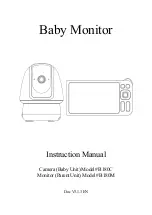
58
Chapter 9 Glossary
HDCP (High-bandwidth Digital Content Protection)
Digital signal coding system developed to copy-protect the digital contents, such as video, music, etc.
This helps to transmit the digital contents safely by coding the digital contents sent via the DVI or HDMI
connector on the output side and decoding them on the input side.
Any digital contents cannot be reproduced if both of the equipments on the output and input sides are not
applicable to HDCP system.
HDMI (High-Definition Multimedia Interface)
HDMI is a digital interface standard, developed for consumer electrical appliance or AV device. This
standard is issued on the basis of the DVI standard which is one of an interface specification for the
connection between a PC and a monitor. The projected image, sound and control signal without compressed
enable to be transmitted with one cable.
Overdrive
This technology enhances response speed by increasing the potential difference at the time of motion of
liquid-crystal pixels, and it is used for liquid-crystal TV sets and others in general. It provides clear-cut
three-dimensional display with little afterimage, by improving response speed of the intermediate graduation
range that frequently appears in moving images.
Phase
Phase means the sampling timing to convert the analog input signal to a digital signal. Phase adjustment is
made to adjust the timing. It is recommended that phase adjustment be made after the clock is adjusted
correctly.
Range Adjustment
Range adjustment controls the signal output levels to display every color gradation. It is recommended that
range adjustment be made before color adjustment.
Resolution
The LCD panel consists of numerous pixels of specified size, which are illuminated to form images. This
monitor consists of horizontal 1920 pixels and 1200 vertical pixels. At a resolution of 1920 × 1200, all pixels
are illuminated as a full screen (1:1).
sRGB (Standard RGB)
International standard for color reproduction and color space among peripheral devices (such as monitors,
printers, digital cameras, scanners). As a form of simple color matching for the Internet, colors can be
displayed using tones close to those of the transmission and reception devices.
















































